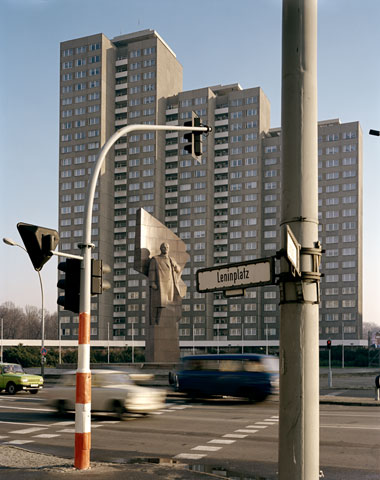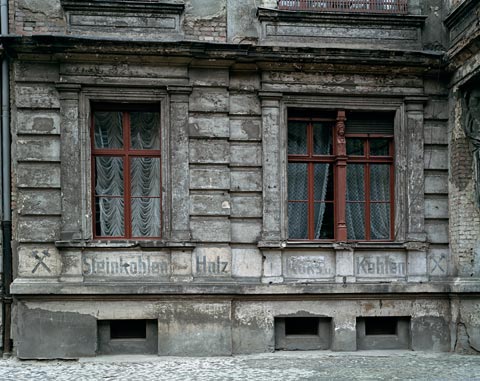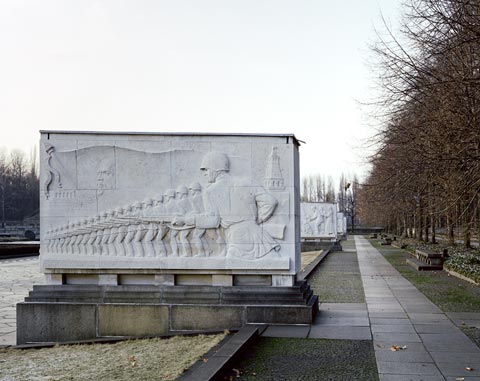New York/The Lives of Others

The former Leninplatz in East Berlin, 1990 (4x5 film)
I saw The Lives of Others today sitting in a sparsely-filled midday showing at the Angelica on Houston Street. The movie, which recently won the best foreign language Oscar, is a deeply felt psychological thriller about life in the German Democratic Republic (DDR/East Germany) before the Wall came down. Much has been written about the film, the superb acting, the compact well-told story, and the clear laconic directing style of Florian Henckel von Donnersmarck. So, I will confine my remarks to visual elements.
The Lives of Others is first and foremost about the interplay of the characters, and the story, it seems to me, could as easily be adapted for the stage as for the screen. That is not to say that the setting, both the exterior views of Berlin, and the interior views of apartments, are unimportant or not well-photographed. But the streetscape is glimpsed--often effectively--rather than lingered on. Although much has changed in Berlin in the 17 years since the collapse of the communist regime, there are countless streets throughout the former East Berlin that still feel, at a glance anyway, frozen in time. There are scores of buildings still pock-marked from World War II shrapnel, and vast tracts of DDR era housing remain at the edges of the city. Finding appropriate locations for the film did not require much recreation.

Prenzlauerberg, East Berlin, 1987 (4x5 film)
In the film, the writer Georg Dreyman lives in a commodious Berlin apartment at the top of a turn of the century walk-up, much like others I've seen, in Prenzlauerberg. The Stasi agent Gerd Wiesler lives in a sterile high rise like the one shown above on Leninplatz. In one scene, Dreyman and a couple of dissident artists stroll through a Soviet war memorial in Pankow in order to converse out of earshot of the Stasi. I photographed a similar Soviet memorial in Treptow in 1990. The film shows nothing of the Wall's quick demise, the rush of people through it on the night of 9 November 1989, but it's easy to spot the grafitti-plastered buildings of post-Wall Berlin, and the odd mix of western and eastern cars that shared the streets for several years.

Soviet war memorial in Treptower Park, Berlin, 1990 (4x5 film)
I had one brush with the Stasi when photographing Berlin in the '80s. My friend Anamarie Michnevich and I--both interested in early modernist architecture--were poking around East Berlin looking for a particular housing project. I was carrying my view camera. We were confused by the map we had--the housing didn't seem to be there--and suddenly I realized that we were standing adjacent a large complex of camera studded buildings. Suddenly, a voice called out and uniformed guards started approaching. We quickly retreated down some nearby steps into the subway, a train pulled in, and we were whisked away. Later, I found out that we had unwittingly stumbled upon the notorious Normannenstrasse headquarters of the East German secret police, the Stasi.

0 Comments:
Post a Comment
Links to this post:
Create a Link
<< Home